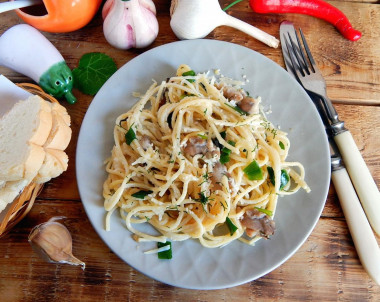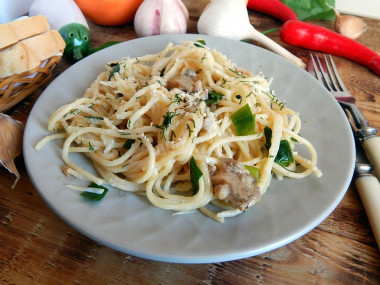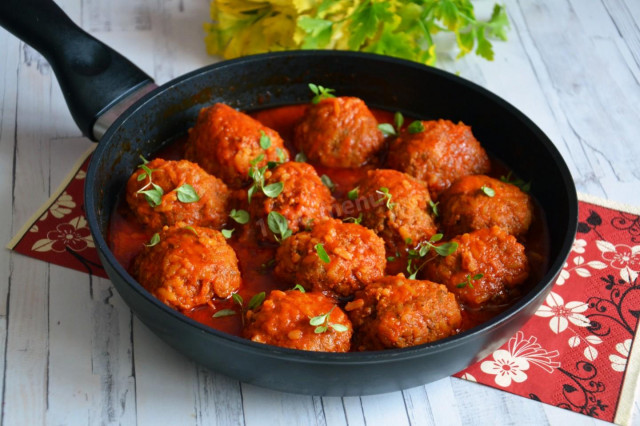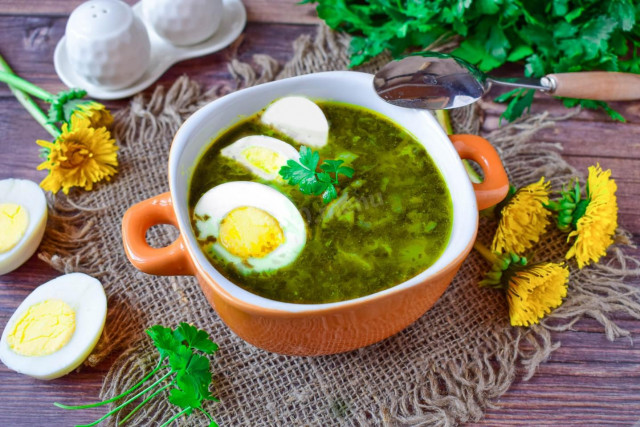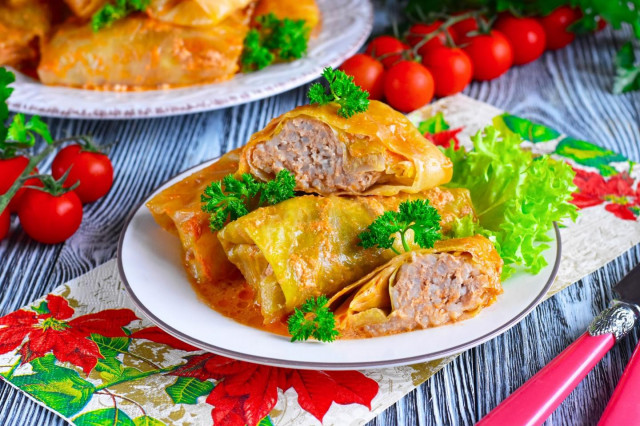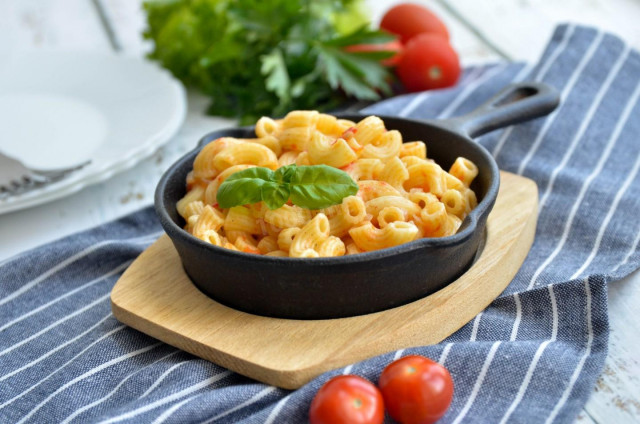Composition / ingredients
Step-by-step cooking
Step 1:
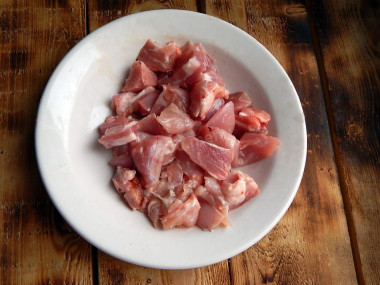
How to make pasta with turkey in a frying pan? Let's prepare the ingredients according to the list. The turkey fillet is washed, dried with paper towels and cut into small cubes.
Step 2:
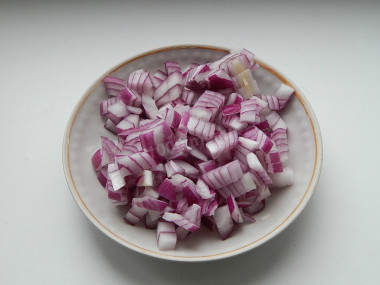
Peel the onion and finely chop it with a knife.
Step 3:
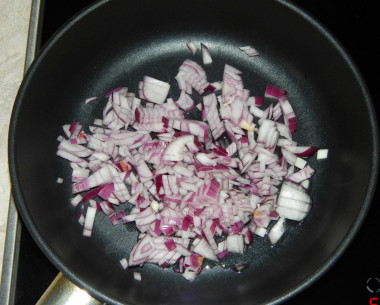
Pour vegetable oil into the pan. We heat it up, fry onions in oil until soft.
Step 4:
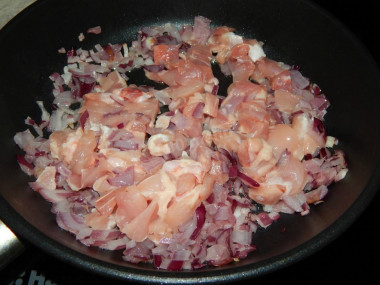
Then we send the cooked turkey meat to the onion in the pan, add spices to taste: salt and ground black pepper. If desired, you can use any other seasoning.
Step 5:
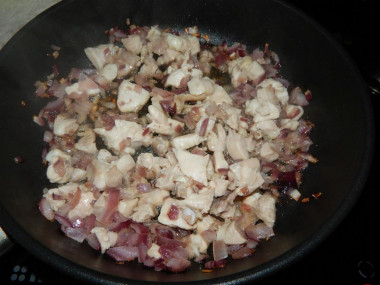
Stir and fry the meat over medium heat, stirring occasionally with a spatula, for about 15 minutes. In parallel, we put the pasta to boil. Pasta for this dish can be used absolutely any to taste and availability, I have spaghetti. Of course, a product made from durum wheat is more useful.
Step 6:
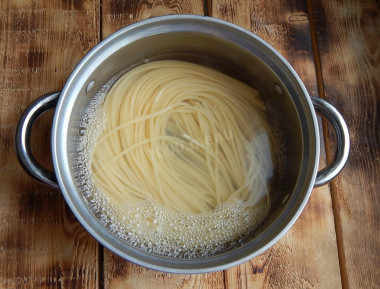
Pour water into a saucepan, add a pinch of salt and bring it to a boil. We lower the pasta into boiling water, mix, bring to a boil, turn down the heat and cook for the time specified in the instructions on the package. But pasta can not be fully cooked, they should be a little too hard to taste. Drain the water, throw the pasta into a colander, let the water drain.
Step 7:
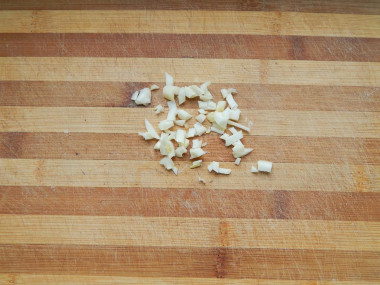
A couple of garlic cloves are cleaned from the film and finely chopped with a knife or grated.
Step 8:
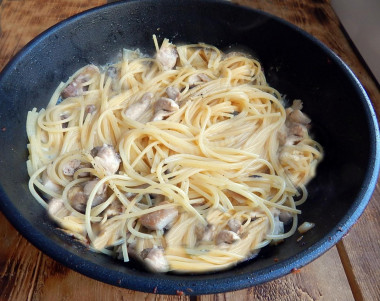
Put pasta and chopped garlic in a frying pan with turkey. Mix it up. Fry them together for about 5 minutes. Turn off the fire. Leave the dish under the lid for another 10 minutes.
Step 9:
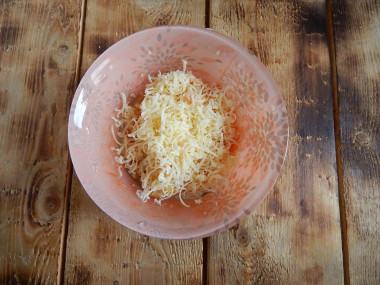
Meanwhile, grate hard cheese, chop with a knife fresh parsley and dill, or green onions.
Step 10:
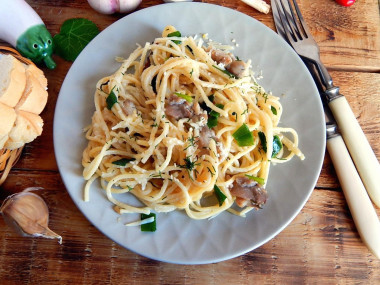
Serve turkey with pasta to the table, sprinkled with hard cheese and herbs, green onions, sesame seeds. And this dish can be cooked more often, because it is easy to diversify it by expanding the set of vegetables in the composition, which in turn will change the taste, and using different varieties and types of pasta, which will change the appearance of the dish. Bon appetit!
Turkey can be replaced with chicken or any other type of meat at your request. But keep in mind that in this case, the cooking time and calorie content of the dish will change.
How to cook pasta properly, how to cook pasta al dente, how to choose a quality product to avoid disappointment and much more, read the article "Pasta and pasta - the subtleties of choice and secrets of cooking" .
Important! An incorrectly selected frying pan can spoil even the best recipe. All the details on how to choose the perfect frying pan for different dishes read here .
Caloric content of the products possible in the composition of the dish
- Dutch cheese - 352 kcal/100g
- Swiss cheese - 335 kcal/100g
- Russian cheese - 366 kcal/100g
- Kostroma cheese - 345 kcal/100g
- Yaroslavsky cheese - 361 kcal/100g
- Altai cheese 50% fat content - 356 kcal/100g
- Soviet cheese - 400 kcal/100g
- Cheese "steppe" - 362 kcal/100g
- Uglich cheese - 347 kcal/100g
- Poshekhonsky cheese - 350 kcal/100g
- Lambert cheese - 377 kcal/100g
- Appnzeller cheese with 50% fat content - 400 kcal/100g
- Chester cheese with 50% fat content - 363 kcal/100g
- Edamer cheese with 40% fat content - 340 kcal/100g
- Cheese with mushrooms of 50% fat content - 395 kcal/100g
- Emmental cheese with 45% fat content - 420 kcal/100g
- Gouda cheese with 45% fat content - 356 kcal/100g
- Aiadeus cheese - 364 kcal/100g
- Dom blanc cheese (semi-hard) - 360 kcal/100g
- Lo spalmino cheese - 61 kcal/100g
- Cheese "etorki" (sheep, hard) - 401 kcal/100g
- White cheese - 100 kcal/100g
- Fat yellow cheese - 260 kcal/100g
- Altai cheese - 355 kcal/100g
- Kaunas cheese - 355 kcal/100g
- Latvian cheese - 316 kcal/100g
- Limburger cheese - 327 kcal/100g
- Lithuanian cheese - 250 kcal/100g
- Lake cheese - 350 kcal/100g
- Gruyere cheese - 396 kcal/100g
- Garlic - 143 kcal/100g
- Ground black pepper - 255 kcal/100g
- Vegetable oil - 873 kcal/100g
- Salt - 0 kcal/100g
- Onion - 41 kcal/100g
- Fresh frozen soup greens in a package - 41 kcal/100g
- Greenery - 41 kcal/100g
- Spaghetti - 338 kcal/100g
- Turkey fillet - 84 kcal/100g


